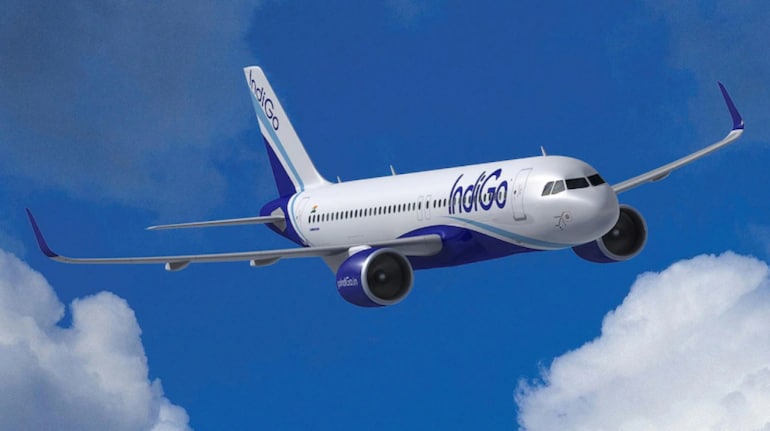



As Airbus and India's largest airline, by market share, IndiGo announced the new order of 500 planes, it created a record for the highest single order for Airbus and the highest total order in the history of commercial aviation. With 477 aircraft yet to be delivered from the previous orders, an additional order of 500 planes raises eyebrows.
IndiGo, which is not known to be impulsive, would hardly have gone ahead with an order of this magnitude just to score a few points over Air India. But then a robust fleet plan from competition is a good enough reason to replan the strategy, look at replacements, and see where IndiGo needs to be to maintain its current market lead based on competition, largely Air India’s fleet plan - which is now known.
The current order is the fifth for the narrow-body planes for IndiGo, with the previous ones being in 2005, 2011, 2015, and 2019, each bigger than the previous order. Starting in 2015, the airline deviated from its strategy of "one-fleet."
Flashback
India liberalised aviation in 1993. Jet Airways survived the longest, with NEPC, Damania, East-West, and Modiluft shutting down much earlier. In 2006, IndiGo started operations, having placed orders for planes in 2005, unlike all others that started operations in this second phase. Kingfisher Airlines, low-cost carrier (LCC) pioneer Air Deccan, and many others collapsed mid-way.
As Kingfisher Airlines was going through rough times, IndiGo, then unlisted, went to the market, tomtoming the benefits of a single-fleet model, the ability to swap planes, reduce training costs, and have seamless inventory management, all of which led to cost savings. Ironically, IndiGo now has a melee of aircraft with subtypes that include the A320 (180 seats), the A320neo (186 seats), the A321neo with two configurations (222 seats and 232 seats), and the ATR 72-600 turboprop aircraft.
Where is the fleet headed?
The airline took 113 months to reach the 100 aircraft mark in its fleet, but only 46 more to add the next 150 and reach the 250 aircraft mark. Since then, it has taken 36 months to add the next 50. The abnormal timelines are the result of the focus on fleet renewal and not fleet addition.
Having moved away from its philosophy of single-fleet type, the airline won’t be far from other frills. A loyalty programme has already been confirmed, which makes it closer to the full-service model. Will business class and ovens follow? For years, the airline believed that cost was its unique selling proposition (USP) and in a country where people are loyal to low cost, it won’t need a loyalty programme. As IndiGo moved towards better yields, it would need the frills necessary to attract those types of customers.
It would probably be just a matter of time before the airline looked into introducing business class. IndiGo, for the last few years, has been steadily heading towards being similar to JetBlue. The American airline too started as an LCC and over the years moved towards a ‘value carrier’ concept, which saw it get into loyalty, have a business class, and even seat-back entertainment screens. The niche presence also made it a codeshare and interline partner with others, something that IndiGo is already doing.
With the likes of Air France - KLM, Turkish Airlines, Qantas, and Qatar partnering with IndiGo, is it time to have a separate cabin upfront? The IndiGo of today and the IndiGo of the future are very different from the IndiGo of yesterday. Only time will tell if IndiGo can offset these costs.
Scope for Pratt & Whitney to make a comeback?
Pratt & Whitney is currently in the news in India for more reasons than one. While IndiGo has between 30 and 40 planes grounded for a lack of engines, Go First has been grounded and moved to insolvency for a lack of engines from Pratt & Whitney. While issues continue for the engine manufacturer, US carrier United Airlines announced that it has opted for Pratt & Whitney to power its A320neo family of aircraft.
IndiGo has said that the engine selection has not yet been done and that it has the right to decide the split between the A320 and the A321 at a later date. Manufacturers typically have a deadline by which an airline can switch between models. This is back-calculated between the lead time for suppliers—structural as well as others like seat manufacturers. In the recent past, IndiGo has swapped its A320 and A321 order books often, which now stand at 340 A320neo and 390 A321neo, which is a culmination of its three orders of 2011, 2015, and 2019 comprising 180, 250, and 300 planes respectively—a cumulative 730 planes.
Discover the latest Business News, Sensex, and Nifty updates. Obtain Personal Finance insights, tax queries, and expert opinions on Moneycontrol or download the Moneycontrol App to stay updated!
Find the best of Al News in one place, specially curated for you every weekend.
Stay on top of the latest tech trends and biggest startup news.